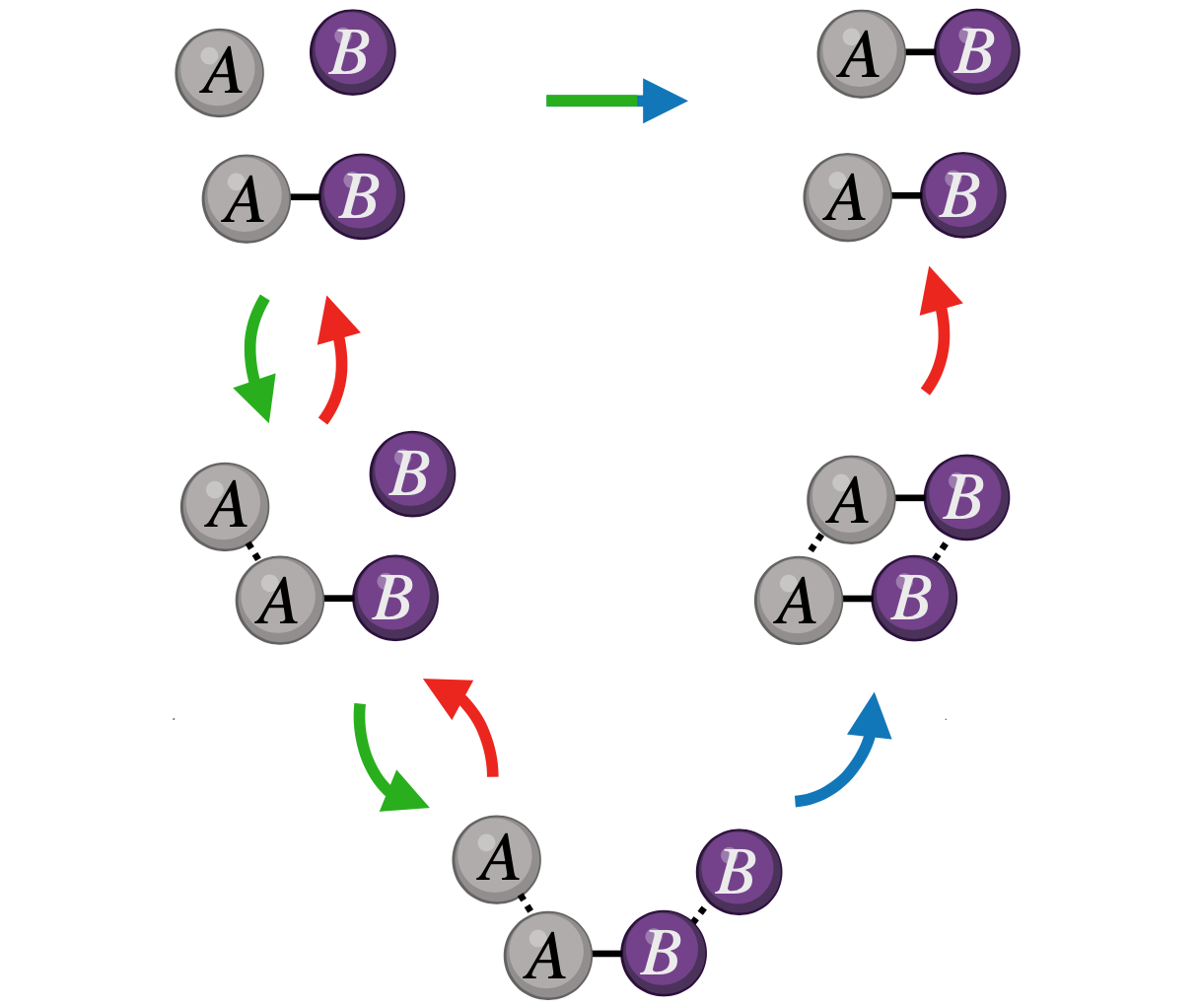From physics to evolution
Natural selection is fundamental to biology but foreign to physics. Why is it so? Can we design a simple physical system that undergoes evolution by natural selection?
Is natural selection physical?

Is natural selection at work in non-living physical systems? What differentiates the concept of natural selection from a physical principle? We have been investigating these general questions with colleagues from different disciplines.
References:
- S. Charlat et al. (2021). Natural selection beyond life?
- S. Charlat, T. Heams, O. Rivoire (2023). Is natural selection physical?
Natural selection in an elementary physical system

Prior research suggests that the most basic forms of template replication — where one dimer catalyzes the formation of another — cannot independently achieve exponential growth or lead to competitive exclusion. This limitation is due to product inhibition, a phenomenon where replicated dimers bind to and inhibit each other. By expanding our investigation from simple catalysis to autocatalysis, we have demonstrated that it is possible to design elementary autocatalysts exhibiting different growth laws, including exponential growth. Our findings also reveal that exponential growth is not a prerequisite for competitive exclusion.
References:
- Y. Sakref, O. Rivoire (2024). Design principles, growth laws, and competition of minimal autocatalysts.
- Y. Sakref, O. Rivoire (2024). On the exclusion of exponential autocatalysts by sub-exponential autocatalysts.
Evolutionary features in a minimal physical system

We propose a model of interacting particles that exhibits several features of biological evolution with minimal ingredients. This model directionally samples a large number of states over long time scales, involves the transmission of digital information without large molecules or template replication, and demonstrates growth and competitive selection without autocatalysis or compartmentalization.
Reference:
- G. Bunin, O. Rivoire (2025). Evolutionary features in a minimal physical system: diversity, selection, growth, inheritance, and adaptation.
